Make wild violet jelly with spring’s first magical blooms! Wild violets are edible and delicious, and they make a flavorful flower jelly that tastes fruity, lightly floral, and full of spring’s beginning sun.
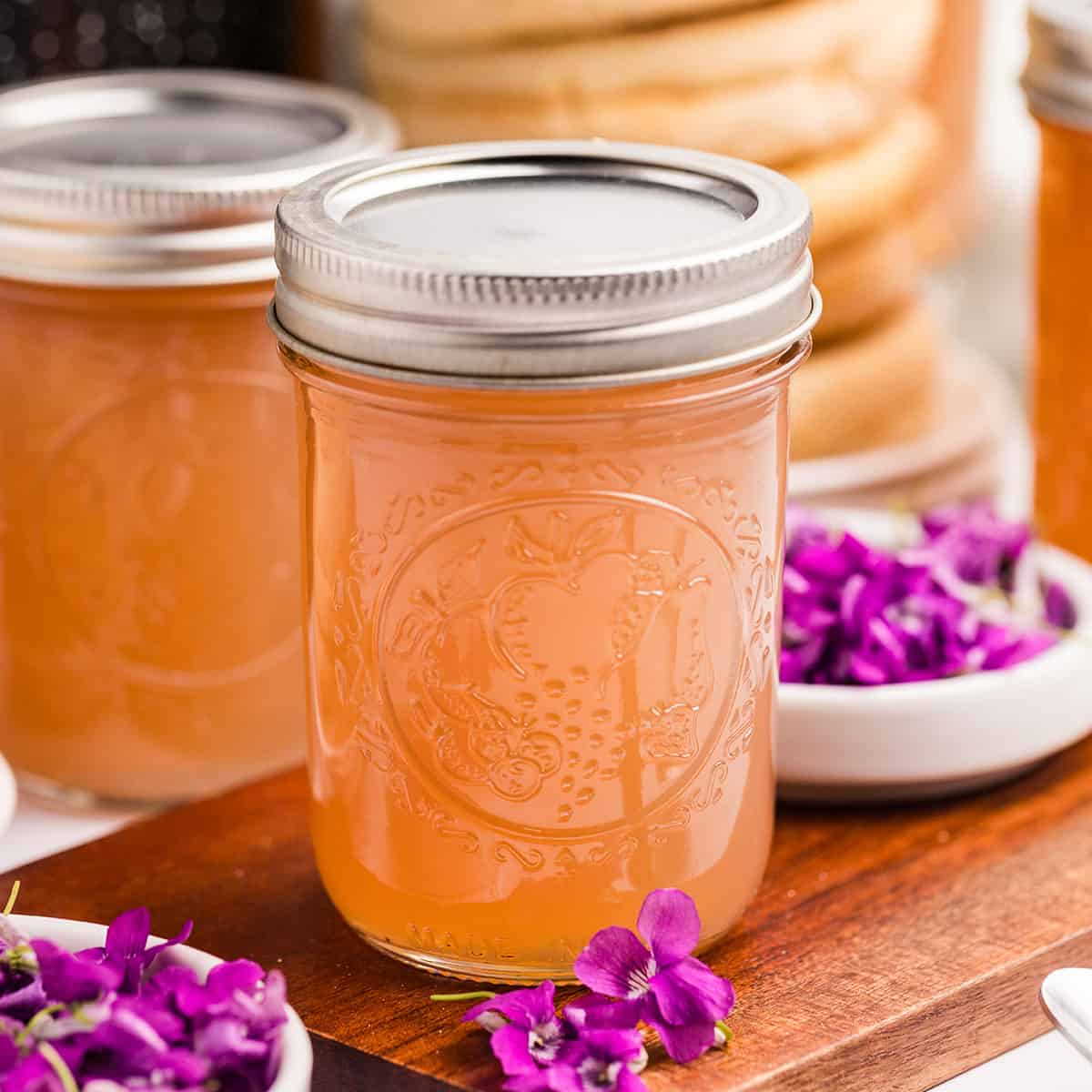
Want to save this post for later?
Edible Wild Violets
With tiny purple blooms and heart-shaped leaves, wild violet “weeds” are often the first flowers that you’ll see in late winter or early spring. They evoke magical energy with a reminder that spring is coming!
Although considered as a weed, they are actually quite useful with edible and medicinal qualities, and are high in vitamin C. They’re a wild-growing asset to our health and mindset if you ask me!
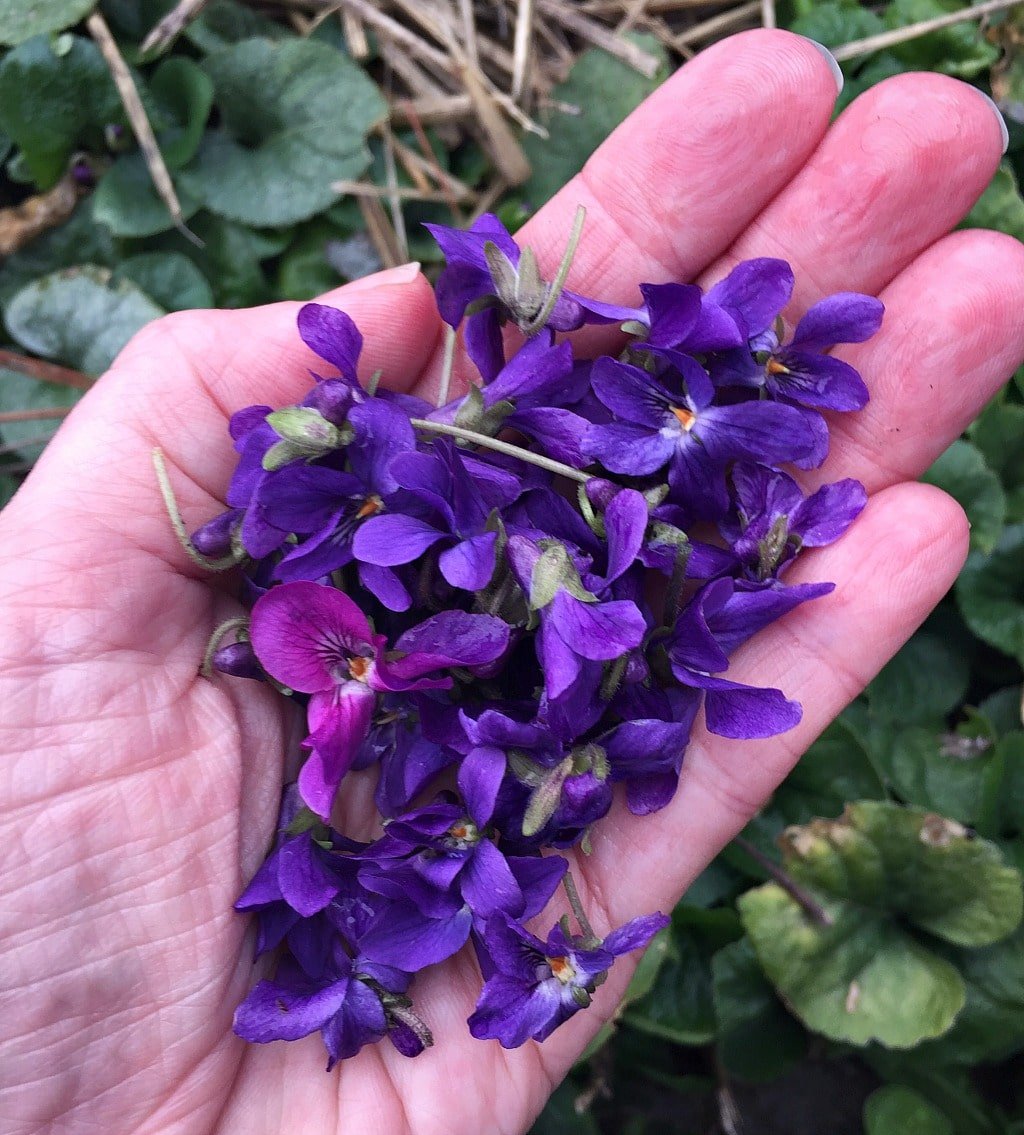
Violet flowers are easy to identify and forage. You can often find them right in your backyard. This way you know they aren’t sprayed with harmful chemicals and are out of the way of pet waste.
These little flowers of spring hope grow almost everywhere. While most are purple, some are blue, yellow, or white. All are edible, but avoid the yellow flowers because they have a laxative effect.
Wild violet greens are also edible, but for this post, we’ll stick to the flowers. The blooms have many benefits and uses. They make lovely soap, color-changing syrup, infused vinegar, and can be candied!
Get recipes using wild violet, lilac, forsythia, chive, calendula, lavender, white clover, nasturtium, elderflower, yarrow, rose, and Queen Anne’s lace flowers in my ebook Edible Flower Recipes: Infusions, Syrups, Jellies, Beverages, & Snacks!
Wild Violet Jelly Recipe
Today I made wild violet jelly, and it’s absolutely enchanting! It turned out a sweet pink color, as opposed to some of the more vibrant colors violets can produce.
This low-sugar flower jelly is delicious, healthy, and so pretty for a spring treat! This recipe makes 4 or 5 half-pints of lovely pink jelly, so there’s plenty to share!
Ingredients
Wild violet flowers: Freshly picked from your yard or another out-of-the-way place is best.
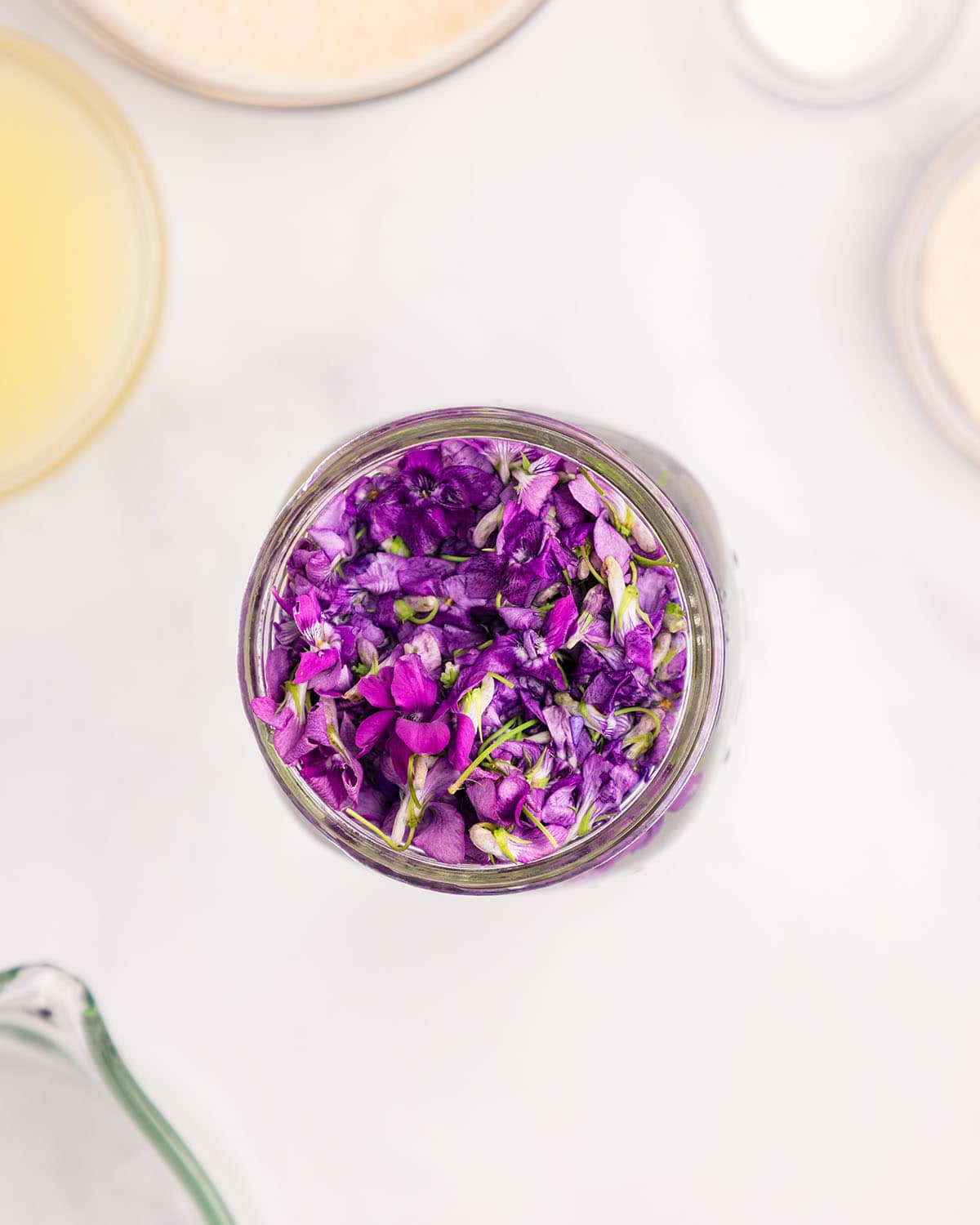
Lemon juice: Bottled is best for canning purposes.
Calcium water: The calcium powder to make calcium water comes in the box with Pomona’s Universal Pectin, which allows you to make a low-sugar jelly.
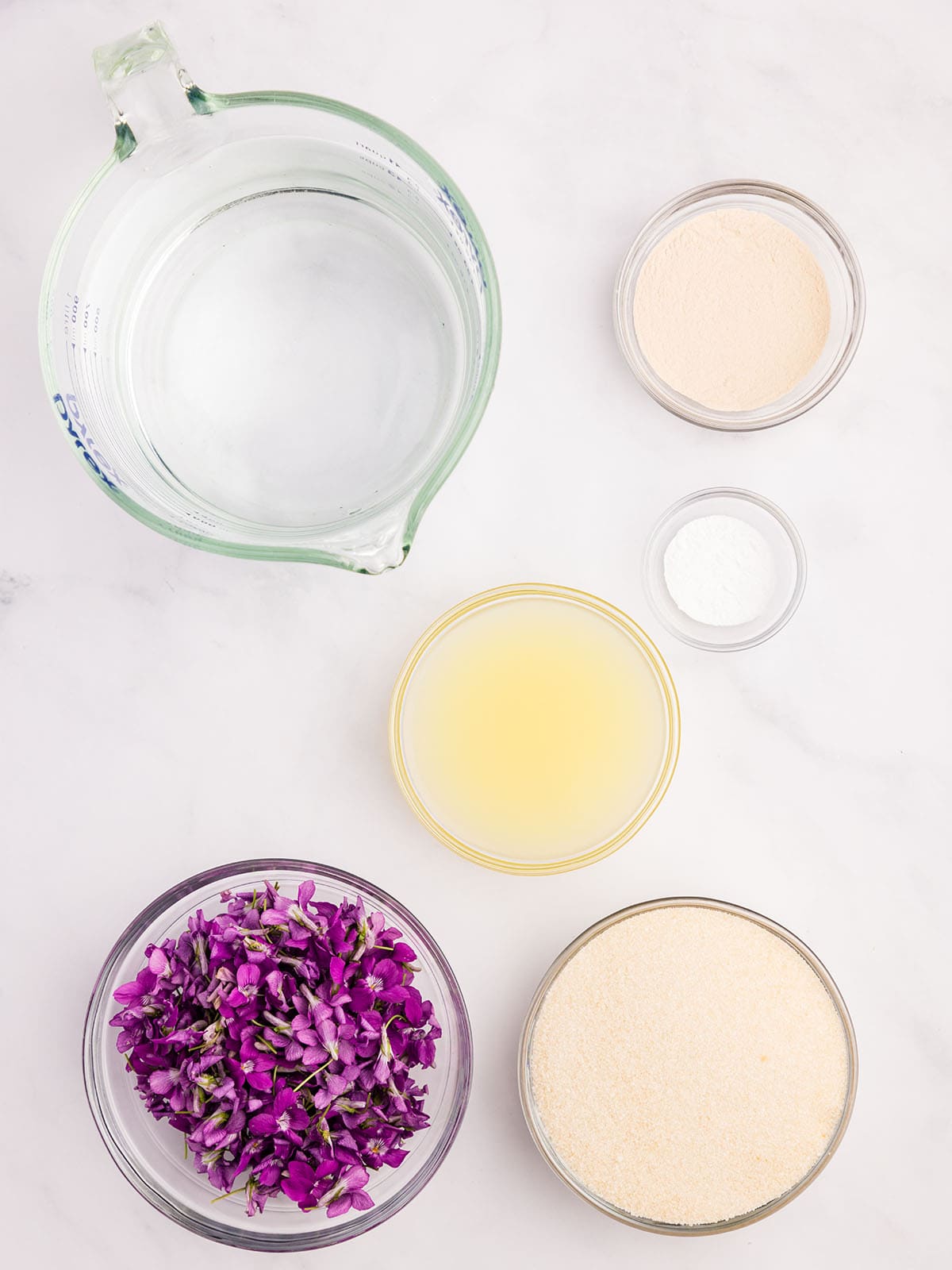
Sugar: I opted for organic cane sugar since granulated sugar works best, and my mind is at rest knowing there’s not tons of sugar in it!
Pomona’s Pectin: This is the magic pectin to use for low-sugar jelly and jam recipes! It comes with the pectin and the calcium powder in the same box.
How to Make Violet Jelly
Violet tea is blue, and adding lemon juice turns it to pinkish purple. This particular recipe is low-sugar, so it will be more of a fairy pink rather than a clear and vibrant purple or magenta.
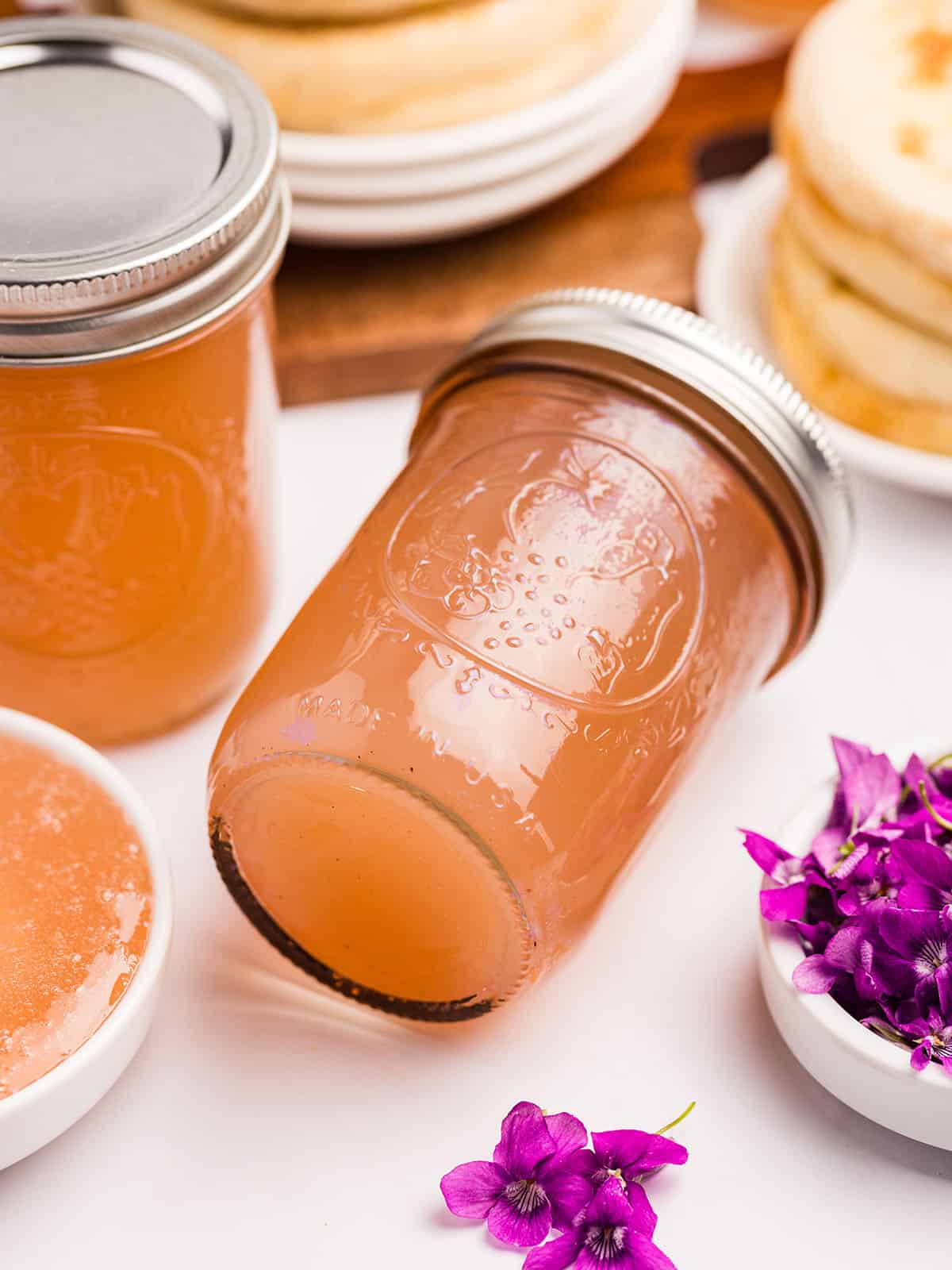
Violet Tea
First, to make the violet tea, bring the water to a boil, then let it cool for a few minutes off the heat.
Place the wild violet flowers into a heat-safe quart jar, and pour the hot water over them to make the tea.
Then cover the jar and allow the violet tea to infuse for about 20 minutes into a beautiful blue color.
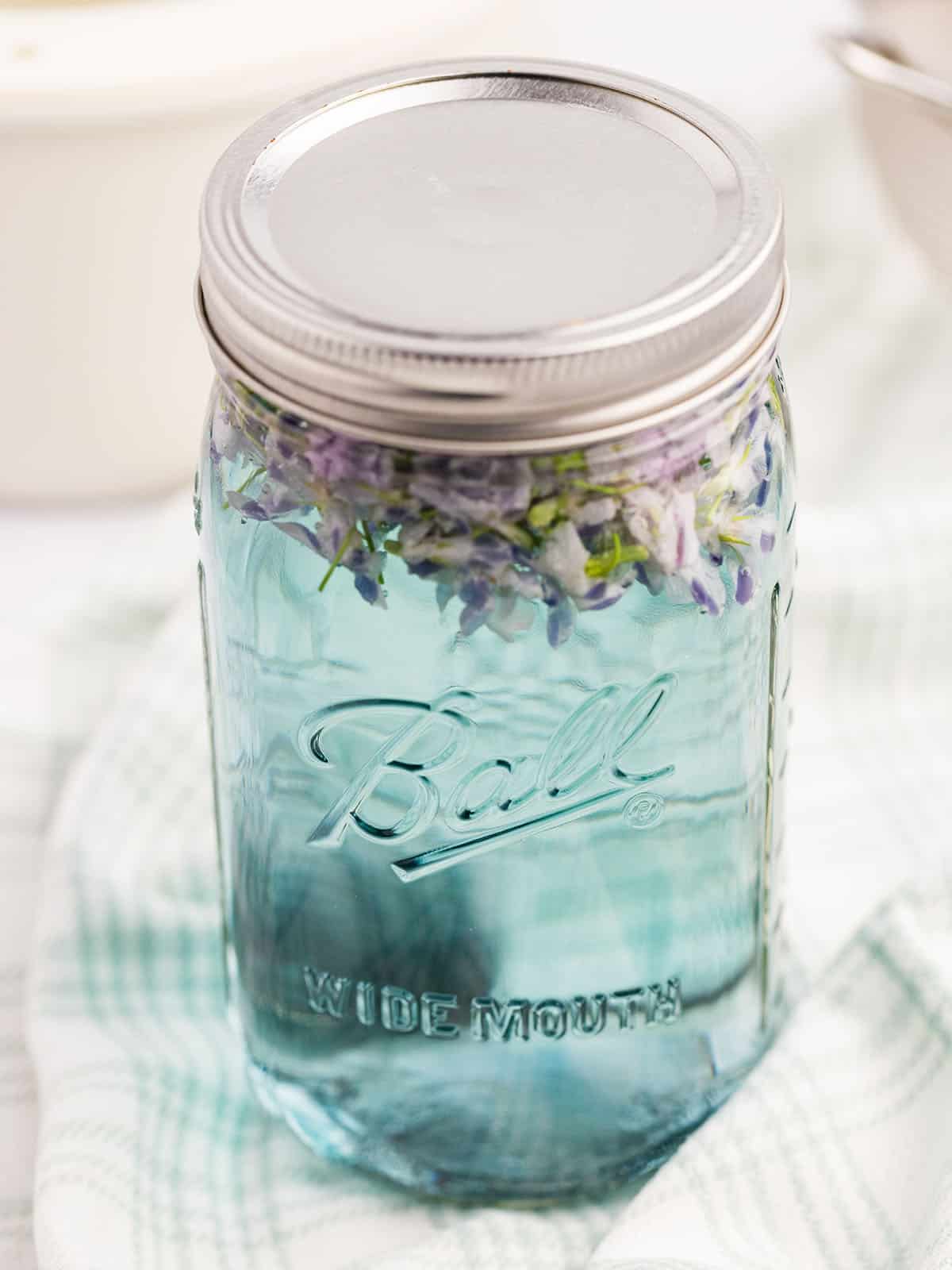
Prepare for Canning
Before beginning, prepare the calcium water by combining ½ tsp of calcium powder from the Pomona’s Pectin package with ½ cup water in a small jar. Shake it up so it’s well combined.
Note: Any extra calcium water can be stored in the refrigerator for future use.
Place the half-pint jars in a large pot with enough water to cover them. Bring the water to a boil, then turn off the heat. Keep the jars in the hot water until it is time to use them.
Then put the lids in a small pot of hot water until you’re ready to use them.
Flower Jelly
Strain the wild violet tea through a fine-mesh strainer or cheesecloth.
Pour 4 cups of violet tea into a medium saucepan.
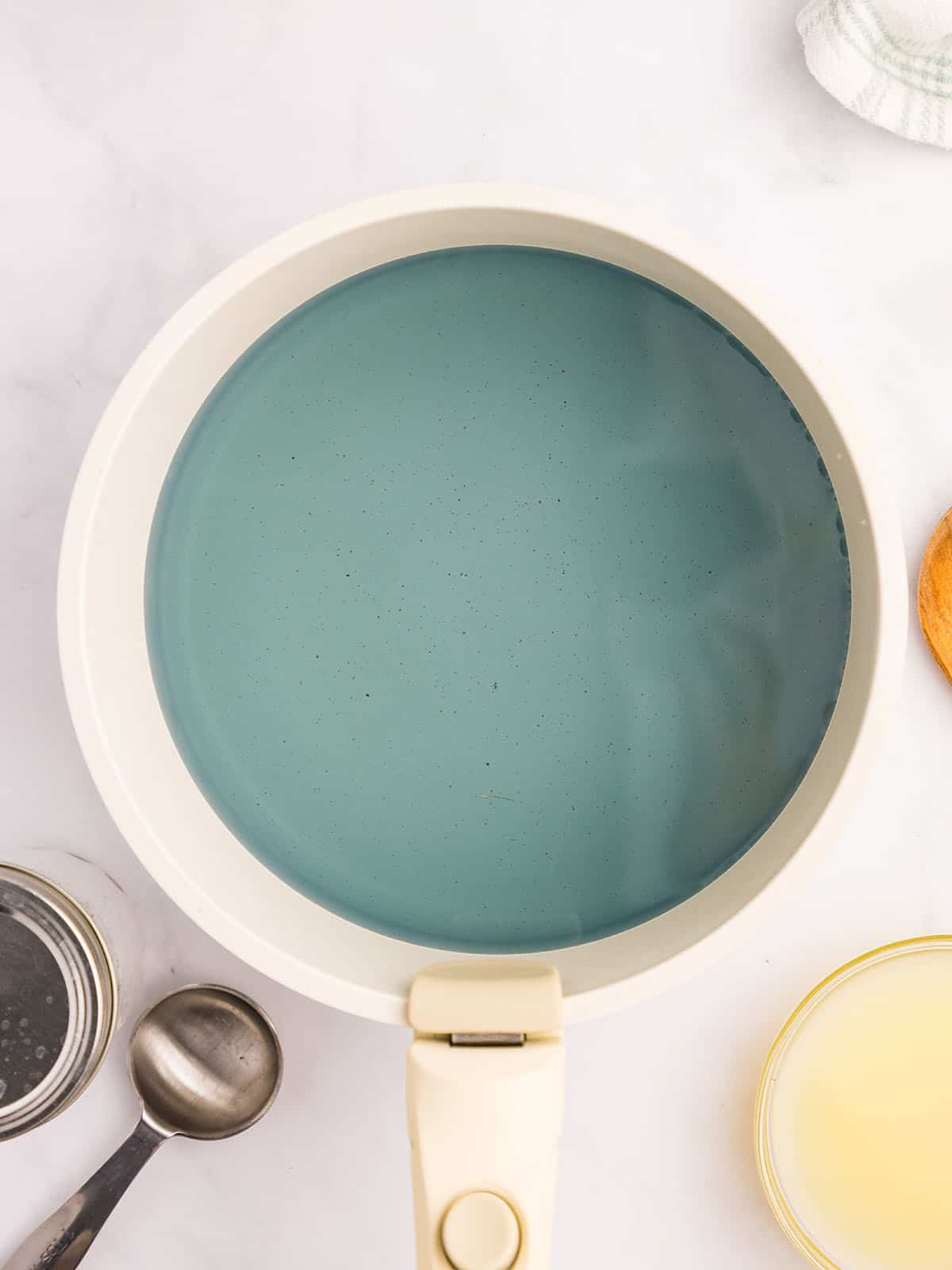
Note: If necessary, add a small amount of water to bring the tea up to meet this measurement.
Add 1 Tbsp + ½ tsp of the calcium water and lemon juice to the tea, and mix it well.

Then, in a small bowl, mix the sugar and pectin together until thoroughly combined, and then set it aside.
Heat the jelly in a pot until it comes to a full boil.
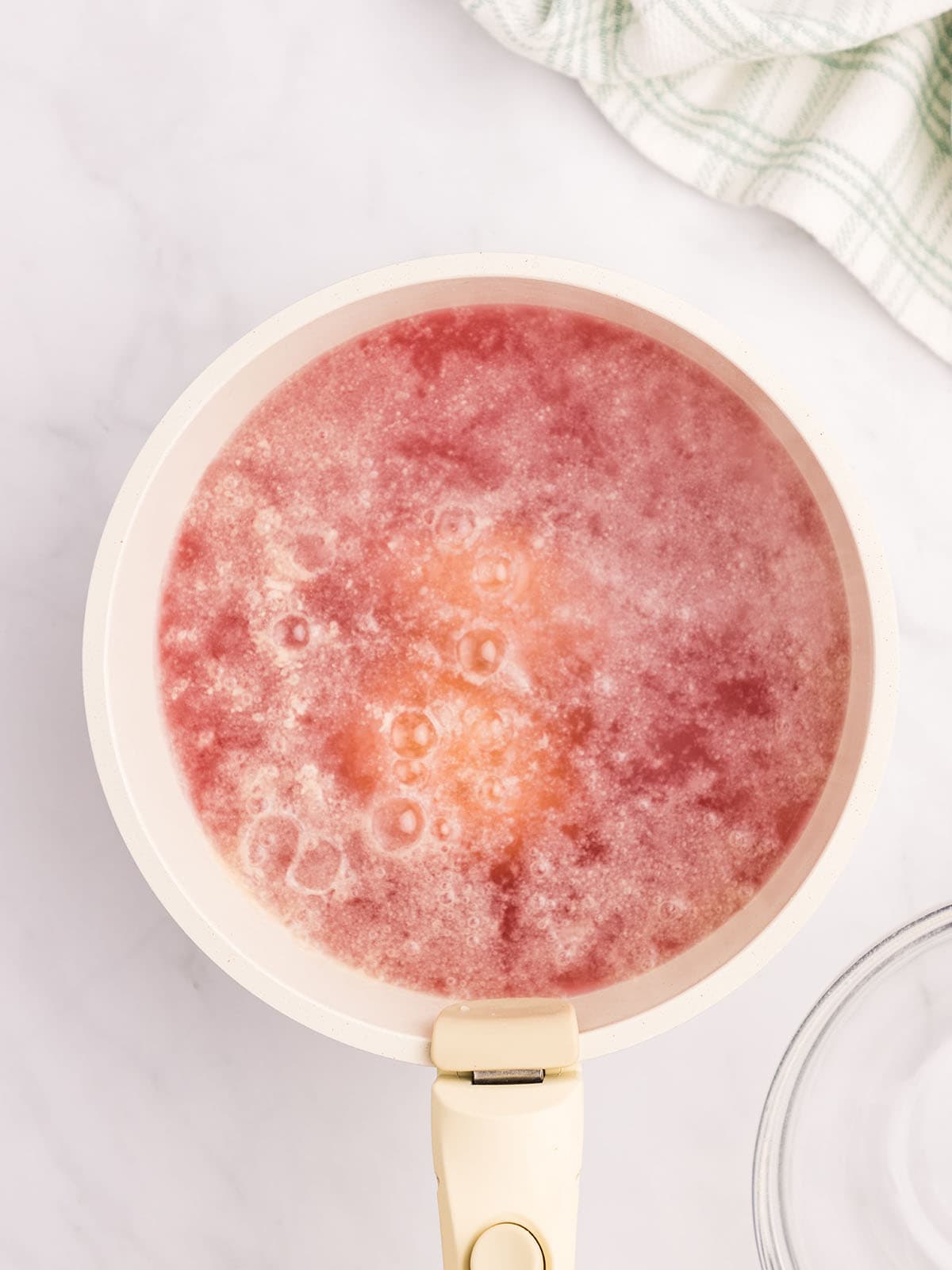
Then add the pectin-sugar mixture and stir it together vigorously for 1-2 minutes until the jelly returns to a boil, then remove it from the heat.
Fill the hot jars with the jelly leaving ¼ inch of head space at the top.
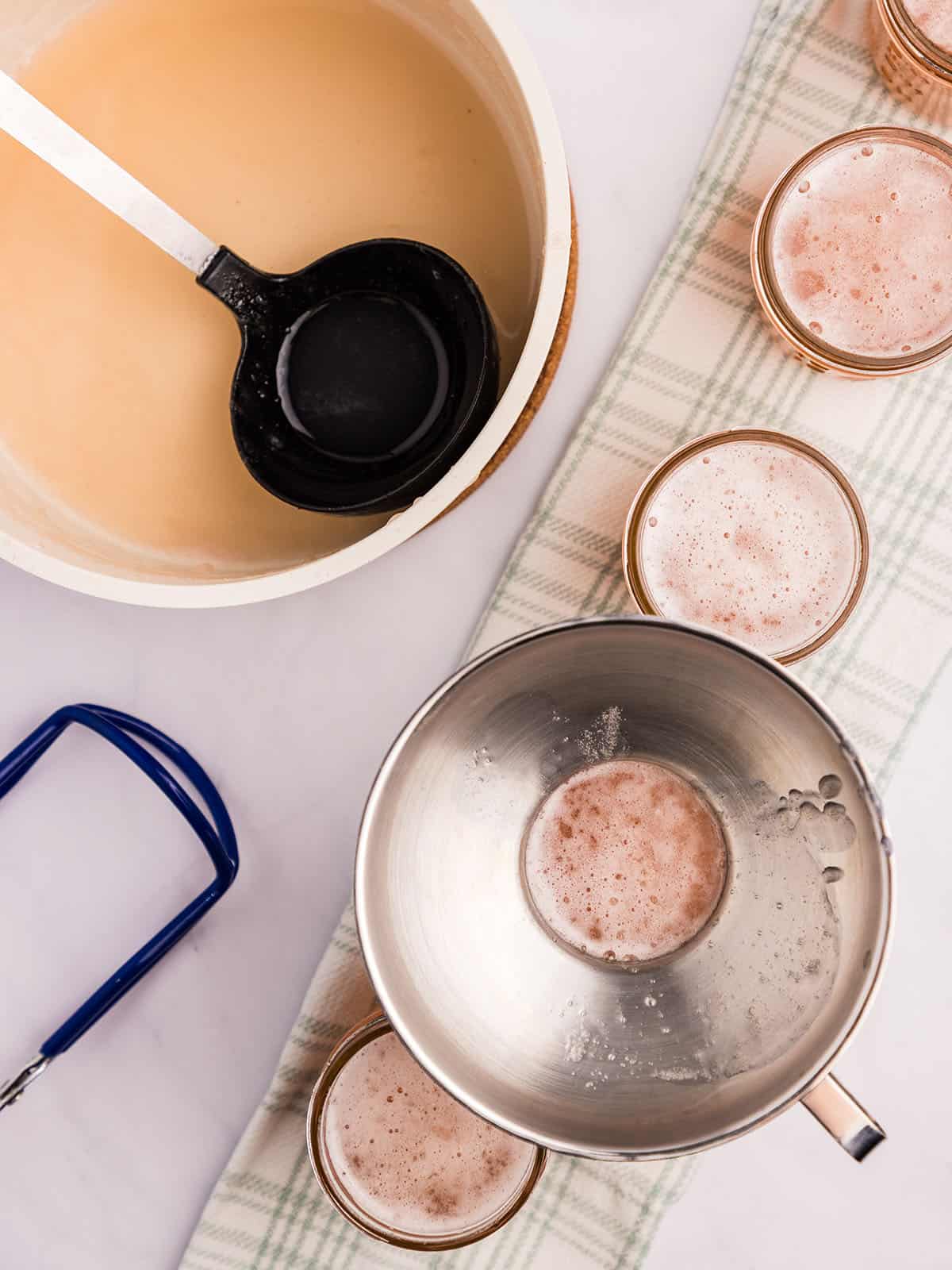
Wipe the rims clean and pop any bubbles that show up if necessary. Then close the jars with a lid and ring.
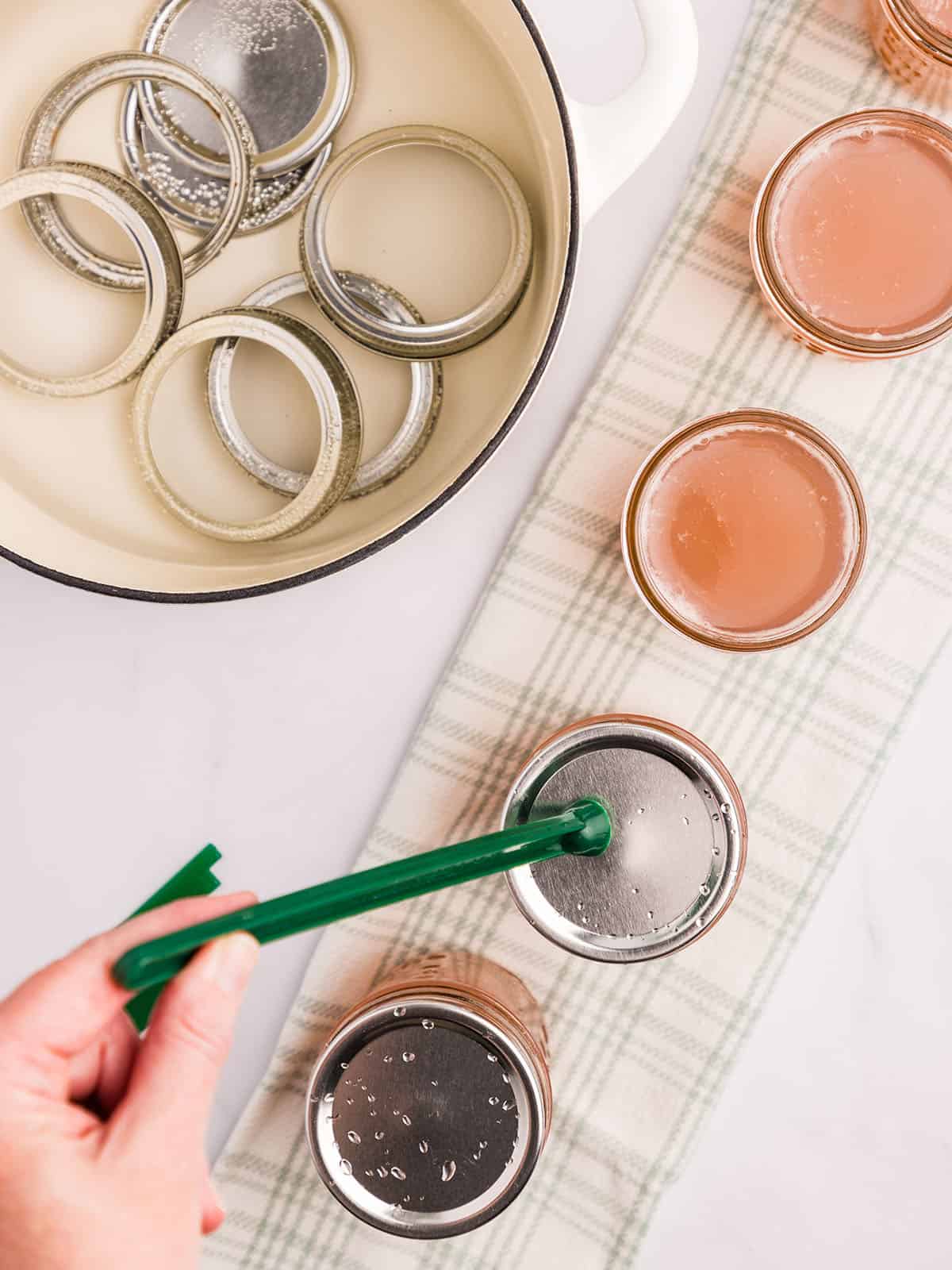
To can, submerge the filled jars in boiling water, and let it boil for 10 minutes.
Note: Add 1 minute for every 1,000 feet above sea level.
Now, remove the jars from the water and let them cool, and check to make sure they are sealed.
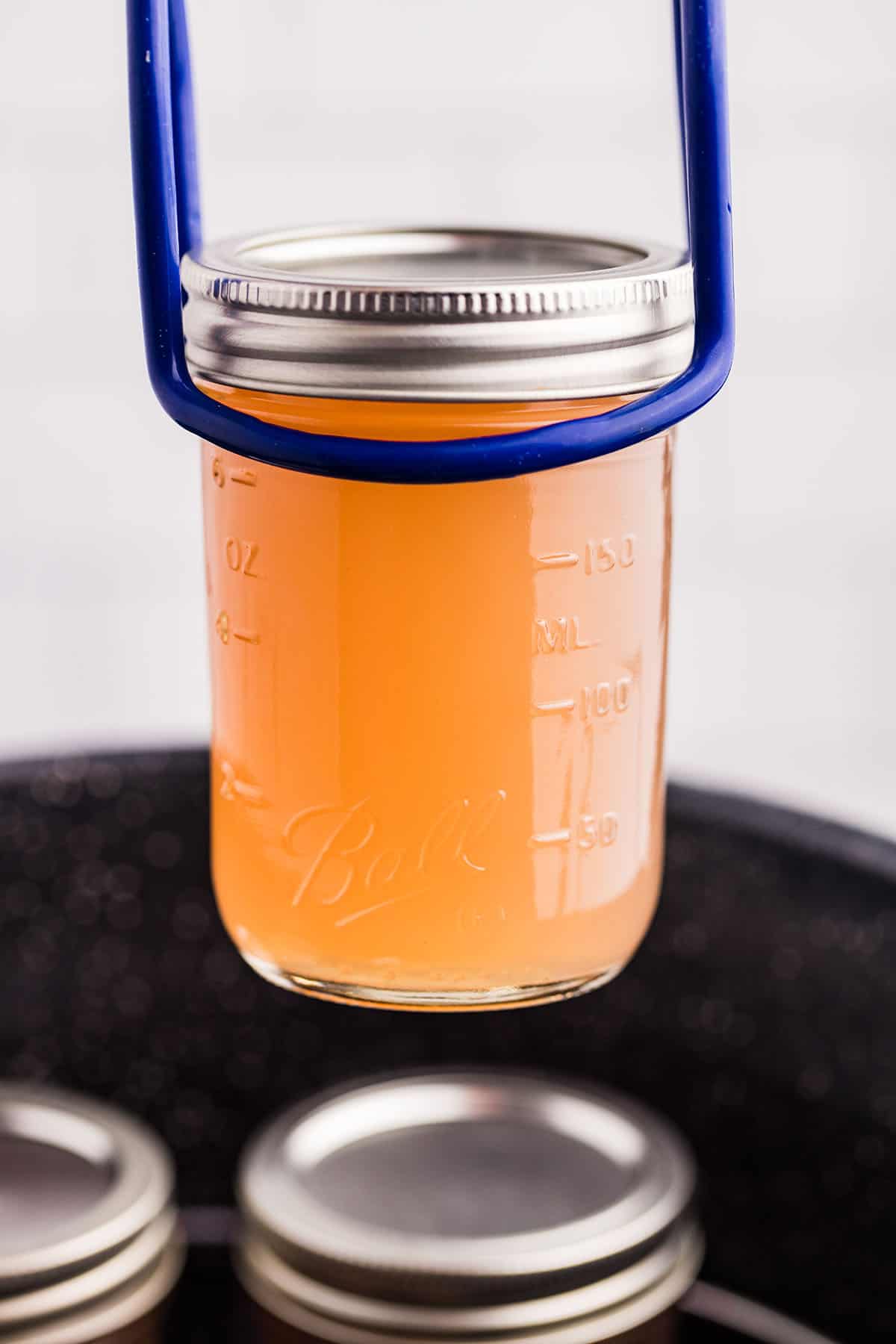
Now, it’s time to enjoy this spring treat!
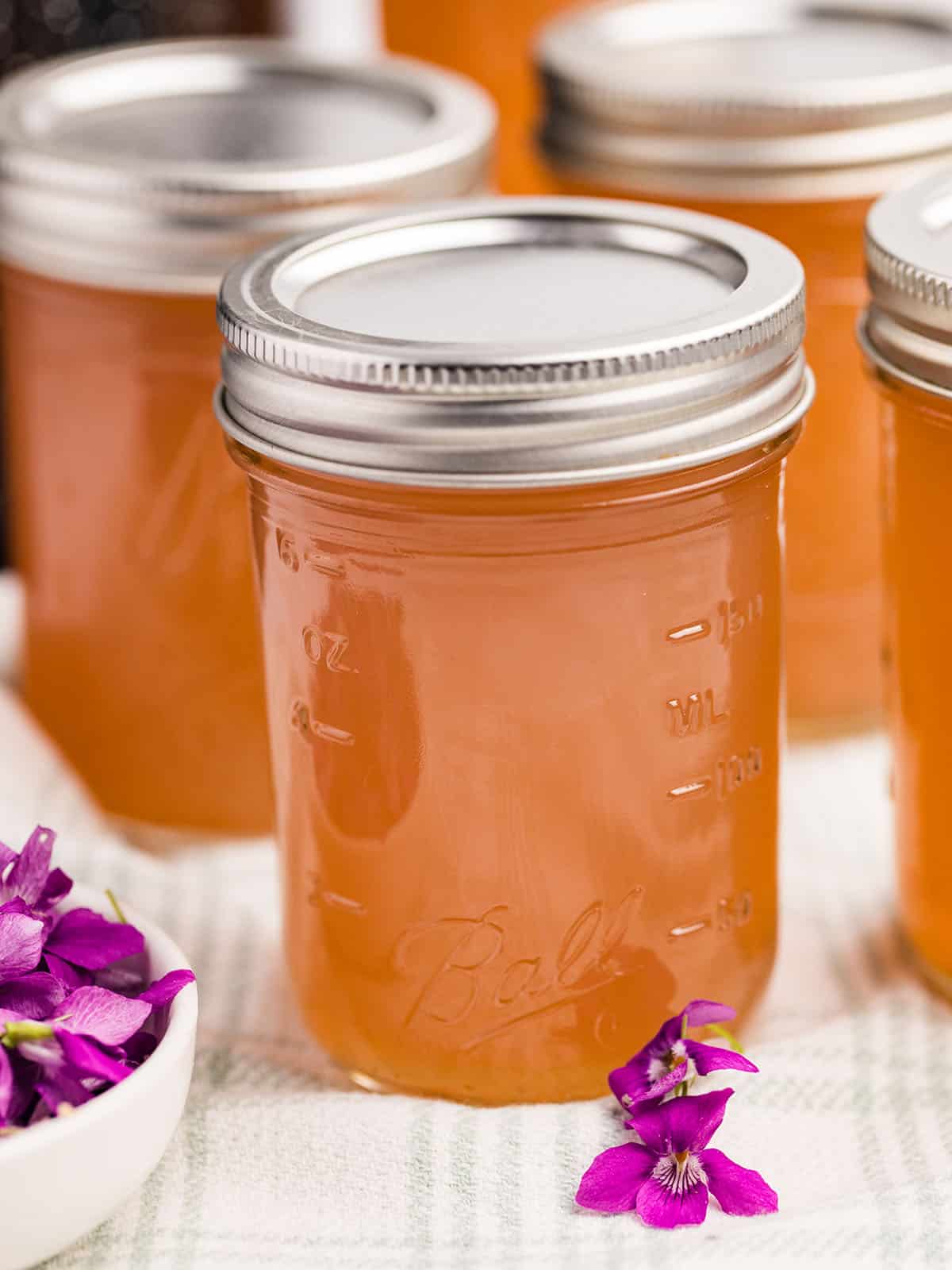
Fairy Treats for Spring
This pink jelly has a fresh spring flavor that is perfect for enjoying any time you need a bit of early spring sunshine! It makes a perfect jelly for a fairy garden picnic as soon as it’s warm enough to sit outside.
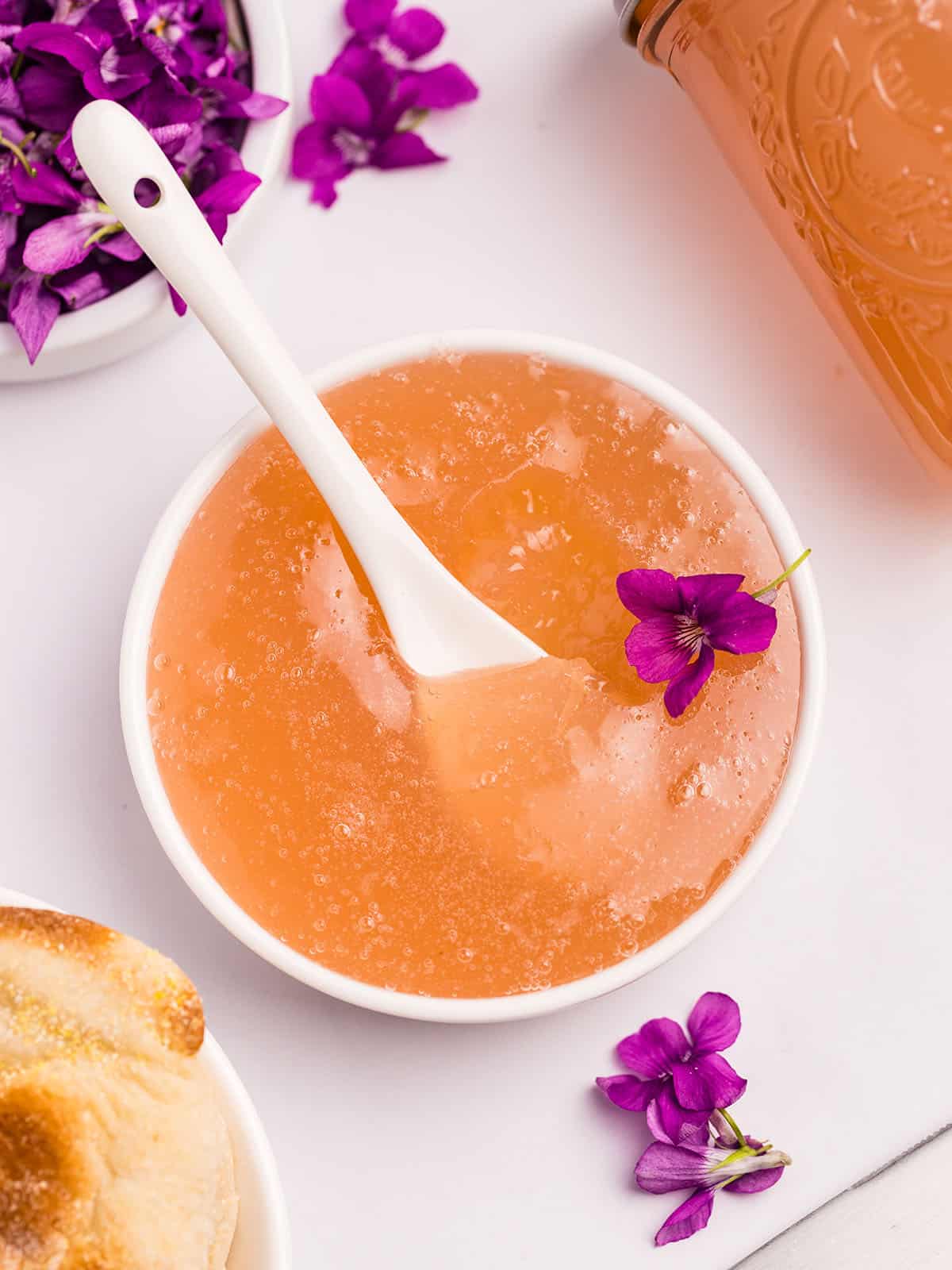
This magical jelly’s flavor is just slightly floral and earthy, with a hint of berries. It is delicious on toast, yogurt, pancakes, or scones.
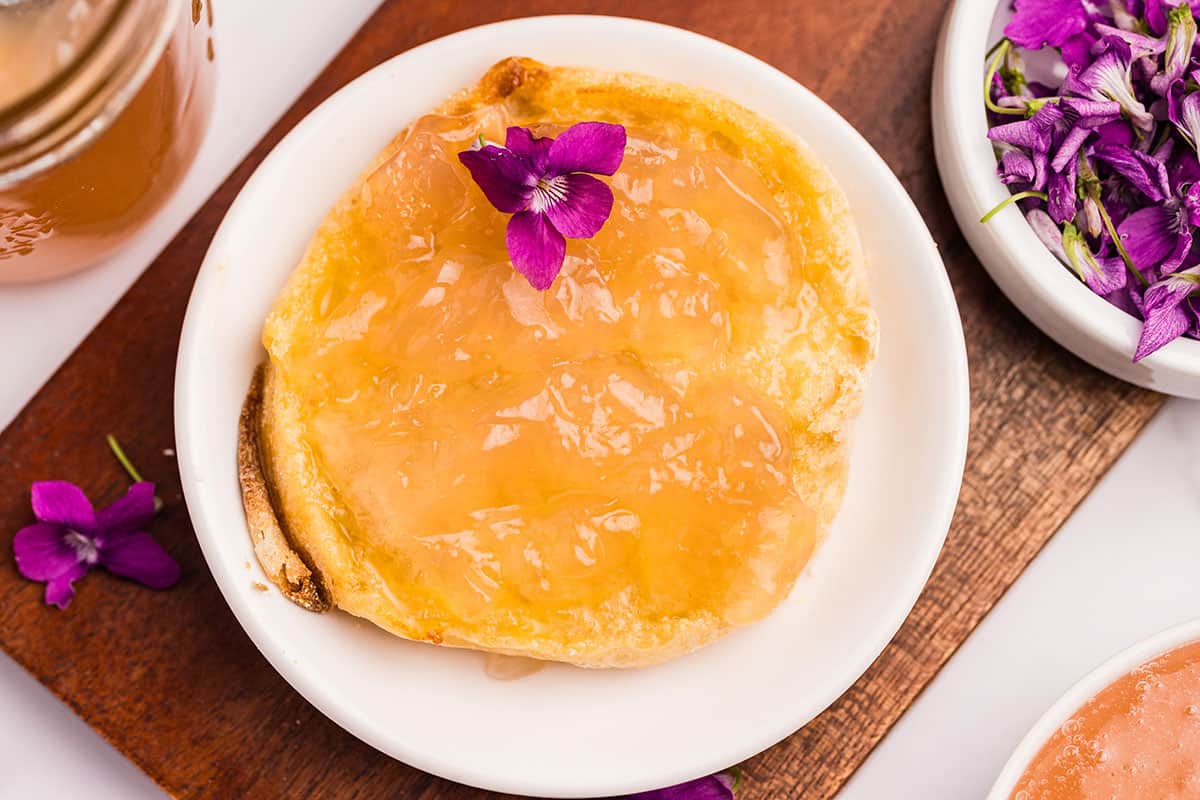
You can also fill thumbprint cookies with it and sprinkle them with wild violet sugar.
Since these jars are properly canned, they’re shelf-stable until you open them. After opening, store wild violet jelly in the refrigerator and eat it within a month.
More Low Sugar Jam & Jelly Recipes
- No Sugar Apple Jelly
- No Sugar Peach Jam
- Low Sugar Raspberry Jam
- Low Sugar Strawberry Jam
- Low Sugar Dandelion Jelly
- No Sugar Blueberry Jam
- Low Sugar Lilac Jelly
- Low Sugar Blackberry Jam
Wild Violet Jelly
Ingredients
Violet Tea
- 4 cups water
- 3 cups wild violet flowers
Violet Jelly
- 1 Tbsp + ½ tsp calcium water see instructions below for more info
- ½ cup bottled lemon juice
- 1¾ cup sugar
- 1 Tbsp + ½ tsp Pomona's Pectin
Instructions
Violet Tea
- Bring the water to a boil, then turn off the heat and let cool for a few minutes
- Place the violet flowers into a heat-safe quart jar, the pour the hot water over them to make the tea.
- Cover the jar and allow the violet tea to infuse for about 20 minutes.
Violet Jelly
- Prepare the calcium water by combining ½ tsp of calcium powder (from the Pomona’s Pectin package) with ½ cup water in a small jar. Shake well. Any extra calcium water can be stored in the refrigerator for future use.
- Place half pint jars in a large pot with enough water to cover them. Bring the water to a boil, then turn off the heat and keep the jars in the hot water until it is time to use them.
- Place the lids in a small pot of hot water until ready to use.
- Using a fine-mesh strainer or cheesecloth, strain the violet tea.
- Pour 4 cups of violet tea into a medium saucepan. If necessary, add a small amount of water to bring the tea up to meet this measurement.
- Add 1 Tbsp + ½ tsp of the calcium water and lemon juice and mix well.
- In a small bowl, mix the sugar and pectin together until thoroughly combined. Set aside.
- Heat the jelly in a pot until it comes to a full boil. Add the pectin-sugar mixture and stir vigorously for 1-2 minutes until the jelly comes back up to a boil.
- Once the jelly returns to a boil, remove it from the heat.
- Fill the hot jars with the jelly leaving ¼ inch of space at the top. Wipe the rims clean and pop any bubbles as necessary. Cover the jars with a lid and ring.
- To can, place the filled jars in boiling water to cover. Boil for 10 minutes (add 1 minute for every 1,000 feet above sea level).
- Remove from the water and let the jars cool, then check to make sure they are sealed.


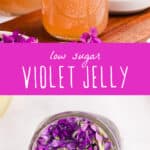
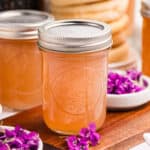

Leave a Reply